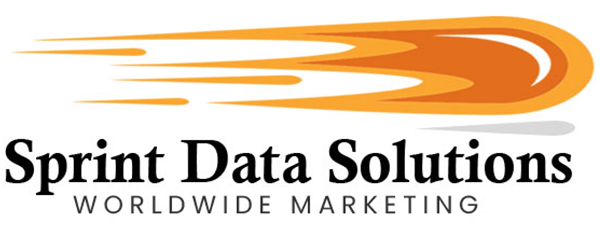Trike Owners Are A New & Growing Market
America, compared to many other nations in the global historical timeline, is relatively young. Yet, it is precisely this youthful foundation that allowed the United States to evolve in tandem with the Industrial Revolution, the rise of modern transportation, and the explosive growth of personal mobility. Few symbols better capture the American spirit of exploration and independence than its extensive and interconnected network of roads and highways. From iconic cross-country routes like Route 66 to the vast web of interstates, these roadways have enabled citizens to commute daily or embark on epic coast-to-coast journeys with ease.
Embedded deeply into this mobile lifestyle is the motorcycle—an enduring emblem of freedom, rebellion, and open-road adventure. For generations, motorcycles have appealed to riders seeking a visceral, unfiltered connection with the landscape and the journey itself. But now, a new evolution in motorized travel is gaining momentum: the trike motorcycle. With three wheels, a lower center of gravity, and enhanced stability, trikes are opening up motorcycling to a broader demographic. Older riders, people with physical limitations, and newcomers to riding are all finding new opportunities to enjoy the road in a safer, more accessible way.
This shift is not just a novelty—it’s a growing market with increasing demand. Riders are not just purchasing trikes; they’re seeking custom gear, accessories, maintenance services, travel accommodations, insurance packages, and community engagement. For businesses attuned to market trends, this is a crucial time to build relationships with a passionate and expanding customer base.
Sprint Data Solutions Worldwide Marketing recognizes the tremendous potential of this emerging market. The company has already laid the groundwork for businesses looking to connect with trike motorcycle enthusiasts. Through meticulously curated databases and marketing solutions tailored to this specific demographic, Sprint Data Solutions offers unparalleled access to the consumers who are driving the future of motor travel. From direct mail to email and digital campaigns, the company provides the tools to help businesses reach these riders with precision and relevance—turning interest into engagement and opportunity into growth.

What Is A Trike Motorcycle?
As the name suggests, a trike motorcycle operates on a three-wheeled platform, distinguishing it from the traditional two-wheeled motorcycles that dominate the road. These “motor trikes” can be configured with either two wheels in the front and one at the rear—known as a reverse trike—or the more common one-wheel-front, two-wheel-rear design. The choice between configurations often depends on handling preferences, balance needs, and design aesthetics, with each offering a unique riding experience.
The concept of the motorized tricycle dates back to the 19th century, during an era of experimentation and innovation in personal transport. Before automobiles adopted the now-standard four-wheel format, inventors explored many configurations, including three-wheeled, steam-powered, and pedal-assisted designs. While the two-wheeled motorcycle eventually took precedence, trike motorcycles never fully disappeared. Their appeal remained strong in certain circles, particularly among riders seeking more stability or a different kind of road presence.
In the early 2000s, demand for three-wheeled motorcycles began to resurface in a big way. Enthusiasts, often older or mobility-challenged riders who still wanted the thrill of motorcycling, turned to custom shops that specialized in converting traditional motorcycles into trike-style vehicles. These conversions were not only functional but often visually striking, turning heads and earning admiration on the road. The growing popularity of these conversions eventually attracted major manufacturers. In 2009, Harley-Davidson, a titan of the motorcycle world, officially entered the market with its first factory-produced trike, the Tri Glide Ultra Classic. This move was a milestone—what had once been a niche modification was now recognized as a legitimate product category by the industry’s most iconic brand.
Following Harley-Davidson’s lead, other manufacturers began exploring or releasing their own three-wheeled models. Companies like Can-Am pushed the boundaries with reverse trike designs such as the Spyder, bringing in new engineering and safety features that appealed to a broader audience. The trike segment now includes a mix of high-powered cruisers, sleek sport-touring models, and even electric trikes, reflecting a diversifying market.
Today, while traditional motorcycles still lead in sales and cultural prominence, trikes are rapidly gaining ground. Their appeal spans various demographics—from aging baby boomers who want a safer ride without giving up motorcycling, to younger riders drawn to the futuristic designs of reverse trikes. The trike motorcycle has evolved from a quirky outlier to a viable, desirable alternative, cementing its place as a fast-growing segment of the broader motorcycle world.
The Trike Difference
Trikes don’t just feature three wheels for cosmetic appeal or design flair—the core motivation behind this configuration is enhanced stability. Traditional motorcycles require constant balance and coordination from the rider, especially when stopping or riding at low speeds. Trikes eliminate that challenge by providing a third point of contact with the road, allowing the vehicle to remain upright without assistance from the rider. This offers a dramatically more accessible riding experience, especially for those who may struggle with strength, balance, or endurance. Much like a car, trikes hold their position at rest or in motion, giving riders peace of mind and reducing the risk of tipping over—particularly helpful in poor road conditions or crowded environments.
Originally, trikes emerged from the garages of passionate motorcycle enthusiasts and small custom shops rather than mainstream manufacturers. These early designs weren’t about pushing boundaries for thrill-seekers—they were solutions born from necessity. Many lifelong riders, as they aged or experienced injuries that affected their physical capabilities, found traditional two-wheeled motorcycles too risky or physically demanding to continue using. Instead of abandoning their love for open-air riding, they turned to customized trikes. These vehicles preserved the emotional and sensory aspects of motorcycling while drastically reducing the physical strain and hazards.
As demand grew, it became clear that trikes were more than just niche passion projects—they were bridges for inclusion. Riders with disabilities, seniors, and even first-time riders wary of traditional bikes began gravitating toward trikes. For many newcomers, trikes became an appealing entry point into the motorcycle world, offering the thrill of the open road without the steep learning curve of balancing and maneuvering a two-wheeled machine. Riding a trike requires less coordination and physical effort, making it ideal for both recreational use and long-distance touring.
Major manufacturers eventually took notice. Industry giants like Harley-Davidson and Can-Am recognized that trikes were not just retaining existing riders—they were expanding the market. These vehicles were breathing new life into the motorcycle ecosystem, creating opportunities to reach previously underserved audiences. Harley-Davidson introduced factory-built trike models like the Tri Glide Ultra, while Can-Am’s Spyder series pushed boundaries with futuristic three-wheeled designs aimed at younger and more adventurous riders.
Innovations continued to reshape the landscape. The Polaris Slingshot, for instance, redefined what a three-wheeled vehicle could be. With two wheels in the front, one in the rear, a low-slung frame, and a steering wheel instead of handlebars, the Slingshot blurs the line between car and motorcycle. Despite these differences, it remains legally classified as a motorcycle in many jurisdictions. Its unique style and driving mechanics have helped it carve out its own following, especially among car enthusiasts who want an open-air alternative to convertibles or traditional motorcycles.
In essence, trikes have evolved from simple accessibility solutions to dynamic lifestyle vehicles that combine comfort, style, and inclusivity. They continue to grow in popularity because they offer a new kind of freedom—not only to those who can no longer ride two-wheeled motorcycles but also to those who never considered motorcycle riding in the first place. Whether for mobility reasons or as a bold lifestyle choice, the trike stands as a symbol of how innovation in design can broaden horizons and bring more people into the joy of the ride.
Who Is The Market?
The people who use motor trikes often include individuals from the same demographic that already ride traditional motorcycles, and there is indeed significant overlap between the two groups. Many experienced riders are drawn to trikes due to their distinctive look, enhanced stability, and comfort during long-distance rides. However, the trike market is not merely a subset of the motorcycle community—it is steadily expanding, welcoming a broader and more diverse group of users.
Chief among trike users are older riders, many of whom have spent years enjoying two-wheeled motorcycles but now seek a more stable and physically accommodating option as they age. Trikes offer them the freedom of the open road without the balance concerns that may arise with age or health-related issues, such as joint pain, reduced strength, or impaired mobility.
Individuals with physical disabilities are another growing segment in the trike market. Unlike standard motorcycles, trikes can be customized or come equipped with features such as hand controls, wider seats, or back supports, making them more accessible to people with limited mobility, including amputees or those with spinal injuries.
Additionally, new and hesitant riders—those who are interested in the motorcycle lifestyle but feel intimidated by balancing a two-wheeled vehicle—often find trikes to be a safer, more confidence-inspiring entry point into the riding world. The three-wheel configuration provides a level of stability that reduces the learning curve and enhances the feeling of security, especially in traffic or during low-speed maneuvering.
The trike user base also includes recreational and leisure travelers, who value comfort, storage space, and touring capabilities. Many trike models come with cargo compartments, backrests, infotainment systems, and advanced suspension setups, making them ideal for long road trips and group rides.As a result, the motor trike market is becoming a unique fusion of traditional motorcycle enthusiasts and newcomers with specific lifestyle or accessibility needs. This growing diversity is prompting manufacturers and marketers alike to develop more targeted products and outreach strategies, ensuring that this segment continues to evolve and thrive.
Elderly Riders
Trikes originally gained popularity as a solution for riders who loved motorcycles but needed more stability and ease of use, and that foundational market continues to thrive. As motorcycles have long been embedded in the American lifestyle, it’s no surprise that many of today’s senior citizens were once avid riders in their youth. However, aging inevitably brings physical challenges—such as joint pain, slower reflexes, or diminished balance—that can make riding a two-wheeled motorcycle risky or even impossible. Trikes address these issues head-on by eliminating the need to balance or counter-steer, while still offering the open-air freedom, wind-in-your-face thrill, and sensory engagement that motorcycle enthusiasts cherish.
This evolution has given rise to a growing and highly specific demographic: aging riders who want to continue living the motorcycle lifestyle but require a platform that accommodates their physical needs. These senior trike riders tend to be loyal, well-informed, and often financially secure, making them an attractive market segment. As a result, there’s a strong demand for age-appropriate riding gear, comfort-enhanced accessories, customized seating and suspension systems, and even mobility aids that integrate with trikes. Service providers such as travel agencies, motorcycle tour companies, and healthcare-focused insurance providers are also beginning to tailor their offerings to suit this mature and passionate rider community. It’s a niche that is not only enduring but evolving, with a wealth of opportunities for businesses that understand its unique requirements.

Disabled Riders
Certain disabilities, such as blindness, make vehicle operation impossible, but for many others—including wheelchair users, individuals with partial paralysis, and those with single-limb amputations—driving remains well within reach with the right accommodations. While traditional motorcycles demand full-body coordination, balance, and fast reflexes, motor trikes open up the experience of two-wheeled freedom to riders with mobility limitations. These three-wheeled vehicles offer the spirit of motorcycling with a greater emphasis on stability and accessibility.
The primary advantage of trikes is their reduced physical demands. Much like the appeal they hold for older riders, trikes eliminate the need for manual balancing and complex counter-steering. Many models can be customized with adaptive controls, relocating gear shifting, braking, acceleration, and clutch operations entirely to the handlebars. This means riders with limited leg function or strength can still operate the vehicle with confidence. Additionally, some trikes feature automatic transmissions and step-through designs, making mounting and dismounting far easier. For individuals with disabilities, trikes are more than just a mode of transport—they’re a gateway to independence, adventure, and a lifestyle once considered out of reach.
People Who Don’t Like Motorcycles
A surprising emergence in the motor trike market is new riders who would not have been motorcycle riders if only traditional vehicles were available. Many people feel uncomfortable with the skill level and risk that comes from conventional motorcycles but are more than happy to use the safer, more stable motor trike. Some models are even available with seating and steering wheels, just like cars, making them more like small, three-wheeled convertibles requiring a motorcycle license instead of a car driving license.
This greatly opens up the demographic possibilities from the typical characteristics of people who choose to ride. It’s always good that the customers for a particular product or service become more diverse because it means more products and services may now be a part of the marketing equation. This is where Sprint Data Solutions Worldwide Marketing can be of service.
Who Is Sprint Data Solutions Worldwide Marketing?
Sprint Data Solutions Worldwide Marketing is an American-owned and operated business. The company came from the dreams of a disabled veteran. After returning to civilian life, it was decided to switch gears from focusing on defense to economic growth. The growth would arise from helping America’s businesses increase the most important resources, customers, and clients.
The company was formed in the hometown of Las Vegas, Nevada, helping local businesses to expand. An early commitment to quality and customer service resulted in steady success and growth for the company. Today, that same small business now proudly boasts a staff with a combined total experience of over 50 years in the marketing sector.
Sprint Data Solutions Worldwide Marketing entered the industry when digital marketing was still more an incoming concept than a widespread practice. Traditional marketing platforms like radio and television advertising dominated the industry. The company’s early focus was direct mail, which would inadvertently impart crucial skills in database collection, management, and analytics skillsets. When digital marketing surprised everyone by becoming an important new platform, businesses needed marketing experts with the skills to exploit the open field. Sprint Data Solutions Worldwide Marketing incorporated digital marketing into its services, enjoying an early mover advantage that helped the business and the companies it served.
This success led to an eventual expansion of the service range. Initially, the company could only provide state service to Nevada. This opened up to the rest of the United States, with Alaska and Hawaii being covered. Then the company expanded services for total continental coverage, opening up to the markets in Canada and Mexico. Now clients can even cross the Atlantic and operate in the European Union, with access to markets such as France.

How We Can Help
Sprint Data Solutions Worldwide Marketing has spent years building one of the most robust and dynamic contact databases in the industry, combining firsthand data collection with strategic alliances across the country. These partnerships provide access to a wealth of reputable third-party databases, significantly expanding the reach and diversity of contact information. Every record within these databases is obtained through ethical and fully legal methods—ranging from opt-in subscriptions and service registrations to customer surveys and voluntary business card submissions, all of which are gathered with clear consent for further marketing applications.
What truly sets Sprint Data Solutions apart, however, is the ongoing commitment to quality and accuracy. Contact data is treated as a living resource: regularly reevaluated, verified, and updated to account for life changes such as relocations, employment transitions, and even deaths. This continuous refinement ensures that clients receive current, relevant information—not outdated leads—making marketing campaigns more efficient and effective from the start.
But simply having access to a large volume of names and numbers is only the foundation. Sprint Data Solutions employs advanced artificial intelligence and machine learning systems to process this data with remarkable precision. These AI-driven analytics tools comb through vast pools of information to identify patterns, apply client-specific filters, and categorize data by relevance. This means clients don’t just receive a generic contact list—they receive a curated, refined selection of individuals who match exact marketing criteria, enhancing both engagement rates and return on investment.
Geographic precision is another core strength of the database. While national-level campaigns are fully supported for brands with broad reach, Sprint also offers scalable geographic targeting. Campaigns can be region-specific—such as the entire Southwest—or narrowed to individual states like Arizona. Targeting can even reach the hyper-local level, such as focusing exclusively on Scottsdale’s Old Town district or a particular zip code in Tucson. This flexibility ensures that clients reach the right audience, in the right place, at the right time.
Equally vital is the sophisticated demographic segmentation available within Sprint’s database architecture. Every contact represents a real person with unique attributes, preferences, and behaviors. Data can be sorted and filtered using dozens of demographic variables—such as age range, ethnicity, religious affiliation, household income, occupation, or lifestyle factors. This is especially powerful for campaigns that need to target niche audiences, such as Hispanic homeowners in Southern California, Jewish retirees in Florida, or middle-income families managing chronic health conditions like diabetes or asthma. By aligning messaging with personal relevance, businesses can significantly increase the likelihood of consumer interest and response.
Through its fusion of ethical data acquisition, cutting-edge technology, and advanced customization, Sprint Data Solutions Worldwide Marketing delivers far more than contact lists—it provides precision-targeted marketing intelligence designed to drive real-world results.
Contact Formats & More
Sprint Data Solutions Worldwide Marketing offers robust databases that provide contact details in client-preferred formats, tailored to meet the specific goals of each marketing campaign. For direct mail initiatives, comprehensive physical mailing addresses are supplied, covering both general consumers and business-to-business (B2B) contacts. Email campaigns benefit from equally versatile databases, offering access to individual consumers as well as corporate contacts, ensuring outreach efforts can scale appropriately based on the intended audience.
For marketing strategies that require real-time engagement or voice communication, Sprint Data Solutions supplies detailed telephone contact lists. Residential phone numbers are available for reaching everyday consumers, while B2B lists go a step further by providing direct lines to key decision-makers—bypassing gatekeepers like receptionists and ensuring your message lands where it matters most. In addition, cellular phone numbers are available, making it easy to execute SMS-based marketing campaigns that reach consumers directly on their mobile devices, a powerful tool for time-sensitive or highly personalized promotions.
In addition to comprehensive contact data, Sprint Data Solutions also offers enhanced services to support clients in executing their marketing strategies more effectively. For organizations that want to launch direct mail campaigns but lack the time, expertise, or resources to manage them independently, Sprint provides a complete turnkey direct mail service. This premium solution encompasses every phase of the campaign—from initial concept and creative design to professional printing, precise list targeting, and final distribution. Everything is managed in-house, eliminating the hassle of coordinating multiple vendors and ensuring seamless, high-quality execution from start to finish. With this hands-on approach, even companies new to direct mail can launch professional, results-driven campaigns with confidence.
Whether you offer a product or service tailored to the unique needs of motor trike owners—such as accessories, insurance, travel packages, or maintenance solutions—Sprint Data Solutions Worldwide Marketing can provide you with targeted, high-quality leads to connect with this rapidly growing and diverse consumer group. Reach out today and discover how the right data can drive real results.






